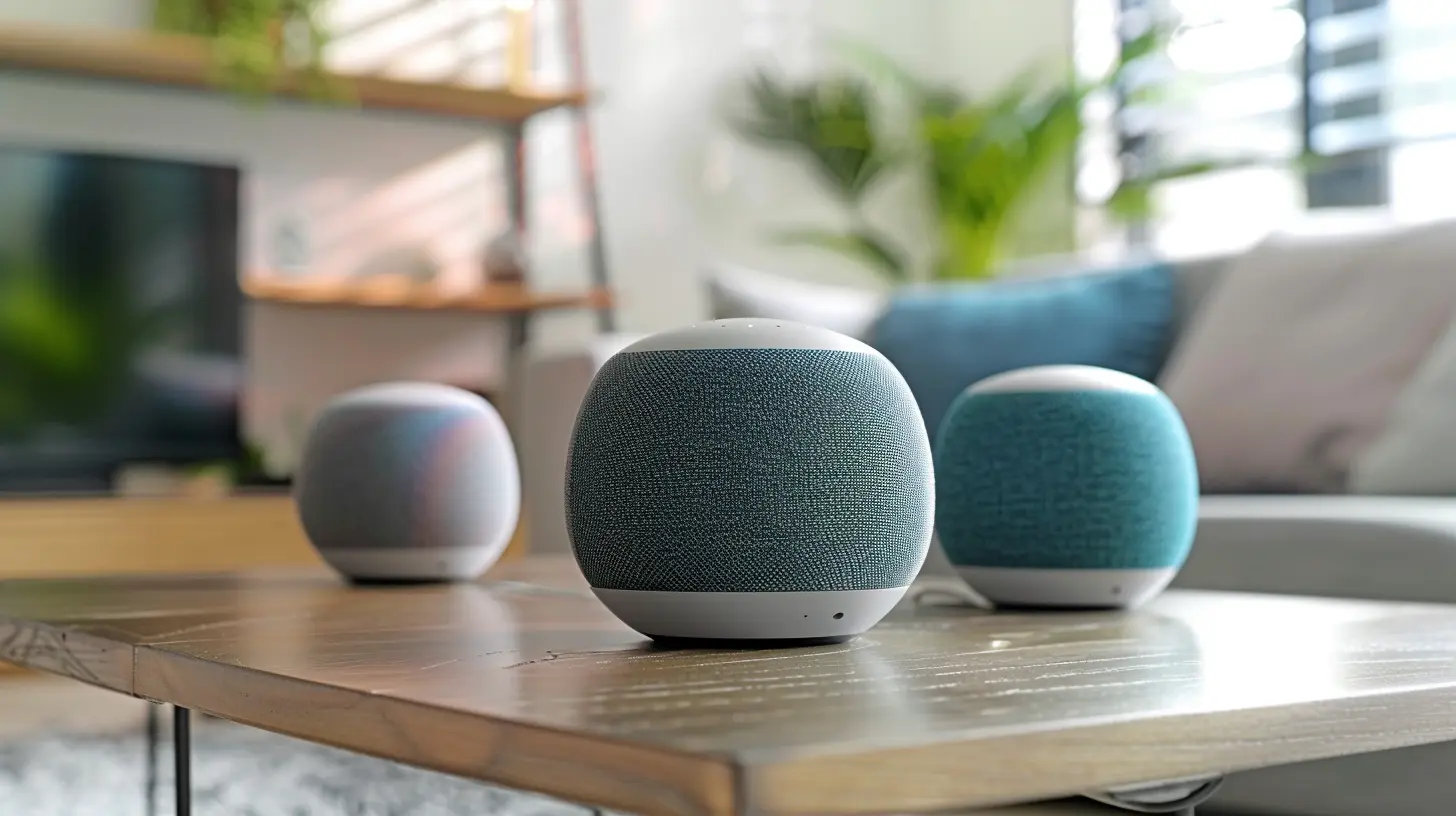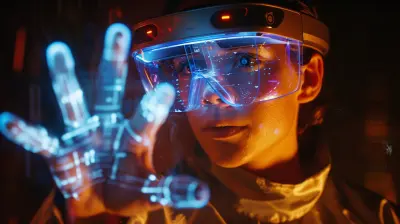Digital Assistants and Accessibility: Making Technology Inclusive
10 July 2025
In today’s tech-driven world, digital assistants like Siri, Alexa, and Google Assistant have become our invisible sidekicks. We ask them to set reminders, play our favorite tunes, or even find a nearby restaurant. But beyond these everyday tasks, digital assistants are breaking barriers and reshaping how people with disabilities interact with technology.
How? By making the digital world more accessible and inclusive for everyone.

The Rise of Digital Assistants: A Quick Overview
Before diving into accessibility, let’s take a moment to understand the role digital assistants play in our lives. These AI-powered tools are designed to respond to voice commands and perform a wide variety of tasks. Whether you’re using Apple’s Siri, Amazon’s Alexa, Google Assistant, or Microsoft’s Cortana, these assistants are all about simplifying our daily routines.But their potential goes beyond convenience. For people with disabilities, digital assistants are not just helpful—they’re essential. Let’s explore why.

Accessibility: What Does It Mean in a Digital World?
Accessibility refers to how easily all individuals, regardless of their physical or cognitive abilities, can access and use technology. In the digital realm, this means creating tools, websites, and devices that are usable by everyone, including those with disabilities.Sounds simple, right? But in practice, it’s a complex challenge. People with mobility, vision, hearing, or cognitive impairments often face hurdles when interacting with technology. This is where digital assistants come in—they’re a game-changer.

How Digital Assistants Are Enhancing Accessibility
Now, let’s get to the heart of the matter—how exactly are digital assistants making technology more inclusive? Here are some key ways they’re stepping up.1. Voice Commands: A Lifeline for People with Mobility Issues
Imagine not being able to use your hands to type or swipe on your smartphone. For people with mobility impairments, this is a daily reality. But with digital assistants, they can do everything from sending a text to turning off the lights—all with just their voice.Digital assistants eliminate the need for physical interaction with devices, making technology accessible to those who can’t use traditional input methods like keyboards or touchscreens. This independence is life-changing for many.
2. Screen Readers: Helping the Visually Impaired Navigate the Web
Navigating a website or app isn’t easy when you can’t see the screen. Enter screen readers, which convert text to speech. Digital assistants like Siri and Alexa offer built-in screen reader functionality, allowing visually impaired users to access information online, read emails, or even shop without ever needing to see the screen.For instance, Apple’s VoiceOver and Google’s TalkBack are screen reading tools that work hand-in-hand with their respective digital assistants, giving visually impaired users a seamless experience.
3. Smart Home Integration: A Boon for Independence
Smart home devices like lights, thermostats, and security systems are becoming increasingly popular. But for people with disabilities, they’re more than just a luxury—they’re a necessity.Digital assistants can be integrated with smart home systems, allowing users with mobility impairments to control their environment with simple voice commands. Whether it’s adjusting the temperature or locking the doors, digital assistants make it easier for people with disabilities to live independently.
4. Real-Time Translation: Bridging the Language Gap for the Deaf and Hard of Hearing
Although digital assistants are primarily voice-activated, they are also making strides in text-based communication. Google Assistant, for example, offers real-time translation, which can be a game-changer for the deaf and hard-of-hearing communities.While it may not replace sign language or other forms of non-verbal communication entirely, real-time text translation makes it easier to communicate with people who don’t share a common language or who may have difficulty understanding speech.
5. Cognitive Assistance: Helping Users Stay Organized
For individuals with cognitive disabilities such as ADHD or autism, remembering tasks or staying organized can be a challenge. Digital assistants can offer reminders, help with scheduling, and even provide step-by-step instructions for completing tasks.By offering gentle nudges and organizing daily activities, digital assistants enable people with cognitive impairments to navigate their day with greater ease.

Breaking Down Barriers: Real-World Examples
Alright, we’ve talked about the “how,” but let’s bring it to life with some real-world examples. Here’s how digital assistants are actively breaking down barriers in different communities.A. Siri and VoiceOver
Siri, Apple’s digital assistant, works beautifully with the VoiceOver screen reader. This combination allows visually impaired users to interact with their iPhones, iPads, or Macs without needing to see the screen. From reading out messages to navigating apps, Siri ensures that visually impaired users are not left out of the smartphone revolution.B. Amazon Alexa and Smart Home Devices
Amazon’s Alexa is a popular choice for smart home integration. For people with physical disabilities, Alexa can control everything from lights to door locks. A simple voice command like “Alexa, turn off the lights” can make all the difference in maintaining independence.C. Google Assistant and Live Transcribe
Google Assistant has made strides in accessibility with features like Live Transcribe, which provides real-time speech-to-text transcription. This feature is particularly valuable for individuals who are deaf or hard of hearing, making conversations more accessible.The Challenges That Remain
While digital assistants have come a long way in improving accessibility, they’re not without their flaws. Let’s take a look at some of the challenges that still need to be addressed.1. Voice Recognition Limitations
Voice recognition technology has vastly improved, but it’s still not perfect. Accents, speech impediments, and even background noise can lead to misunderstandings or misinterpretations, which can be incredibly frustrating for users who rely on voice commands as their primary interface with technology.2. Privacy and Security Concerns
Digital assistants are always listening—well, almost always. This raises concerns about privacy, particularly for vulnerable populations like the elderly or individuals with cognitive disabilities. How do we ensure that these tools are safe to use without compromising personal data?3. Over-Reliance on Internet Connectivity
Many digital assistants require a stable internet connection to function properly. For users in rural or underdeveloped areas with limited access to high-speed internet, this can be a significant barrier.
The Future of Digital Assistants and Accessibility
While digital assistants have already made a huge impact on accessibility, the future holds even more promise. With advancements in AI and machine learning, we can expect these tools to become even more intuitive, personalized, and responsive to the needs of users with disabilities.Here are a few trends to keep an eye on:
A. AI Personalization
As AI continues to evolve, digital assistants will become more adept at learning user preferences, speech patterns, and even emotional cues. This could lead to more personalized and accurate interactions, especially for users with speech impediments or cognitive impairments.B. Multimodal Interaction
The future of digital assistance may not be limited to just voice commands. We’re already seeing the emergence of multimodal interaction, where users can control devices through a combination of voice, gestures, and even eye movements. This could open up new possibilities for individuals with varying types of disabilities.C. Offline Functionality
As digital assistants become more advanced, we may see more offline functionality, making them accessible to users without constant internet access. This could particularly benefit individuals in rural or underserved areas.Conclusion: A Step Toward a More Inclusive World
Digital assistants are more than just cool gadgets—they’re tools that have the power to change lives. By making technology more accessible, they’re opening up a world of possibilities for people with disabilities. From voice commands that enhance mobility to screen readers that bring the web to life for the visually impaired, digital assistants are pushing the boundaries of what’s possible.But while we’ve made great strides, there’s still work to be done. As we look to the future, we need to ensure that the technology we develop is inclusive, accessible, and above all, empowering for every individual.
Who knows? The next innovation in digital assistants could be the one that finally closes the accessibility gap for good.
all images in this post were generated using AI tools
Category:
Digital AssistantsAuthor:

Adeline Taylor
Discussion
rate this article
2 comments
Arwen Morgan
Great insights! Digital assistants are crucial for enhancing accessibility and inclusivity in technology.
November 24, 2025 at 12:20 PM

Adeline Taylor
Thank you! I'm glad you found the insights valuable. Digital assistants truly play a vital role in making technology more accessible for everyone.
Vanta McIntyre
Empowering everyone through technology is a beautiful journey! Digital assistants are bridging gaps and fostering inclusion, proving that innovation knows no boundaries. Let's embrace these advancements and champion a more accessible future for all!
July 27, 2025 at 2:57 AM

Adeline Taylor
Absolutely! Embracing digital assistants is key to fostering inclusivity and ensuring technology benefits everyone. Let's continue advocating for accessible innovations!


